Five places to see along the Limestone Coast in South Australia

It was our first road trip across Australia and we had planned to drive all the way from Adelaide to Melbourne, a distance of about 730 kms over three full days. The husband was at the wheel and I was pouring over the maps, playing the navigator, along with the GPS. We were barely out of Adelaide city, when a pair of emus interrupted our journey as they posed for us. But it was a little koala a small furry creature that crossed the road and sat right in the middle of the tarmac that got all our attention.
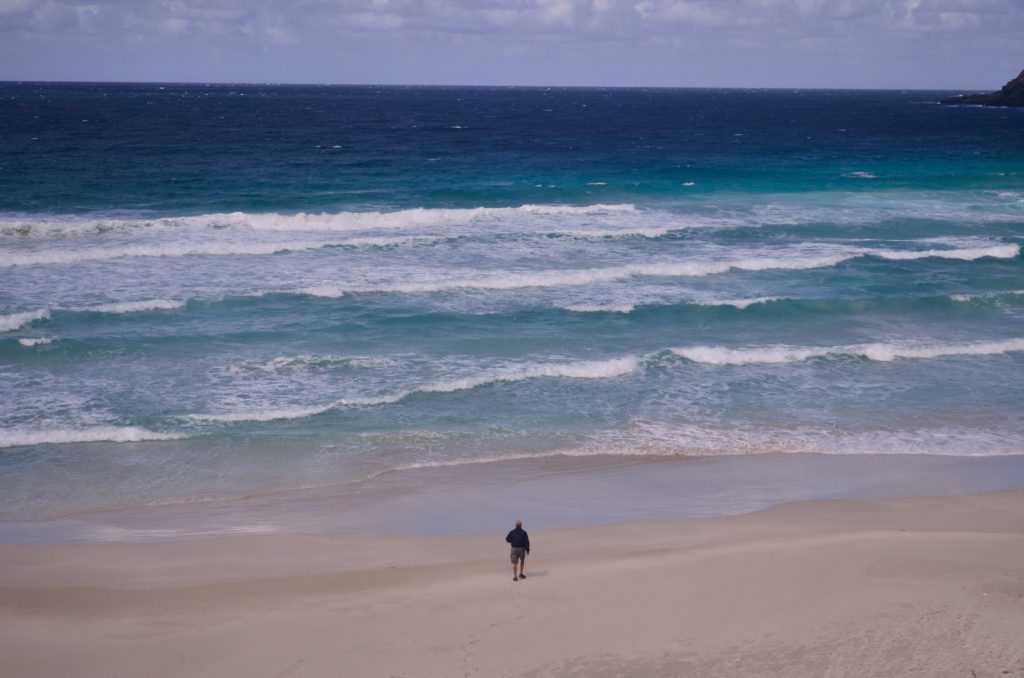
The sea and you
I had heard so much about the Great Ocean Drive in Victoria that I was waiting for some spectacular views along the route. But what really took my breath away, was the Limestone Coast that spanned all along South Australia, joining the Victorian border. It was not just the quaint sea side towns that lured me, but the variety of destinations along the region – from wetlands, vineyards, national parks to caves that begged me to stop. The map threw up so many places out of the blue, but here are my favourite five.
Coorong National Park
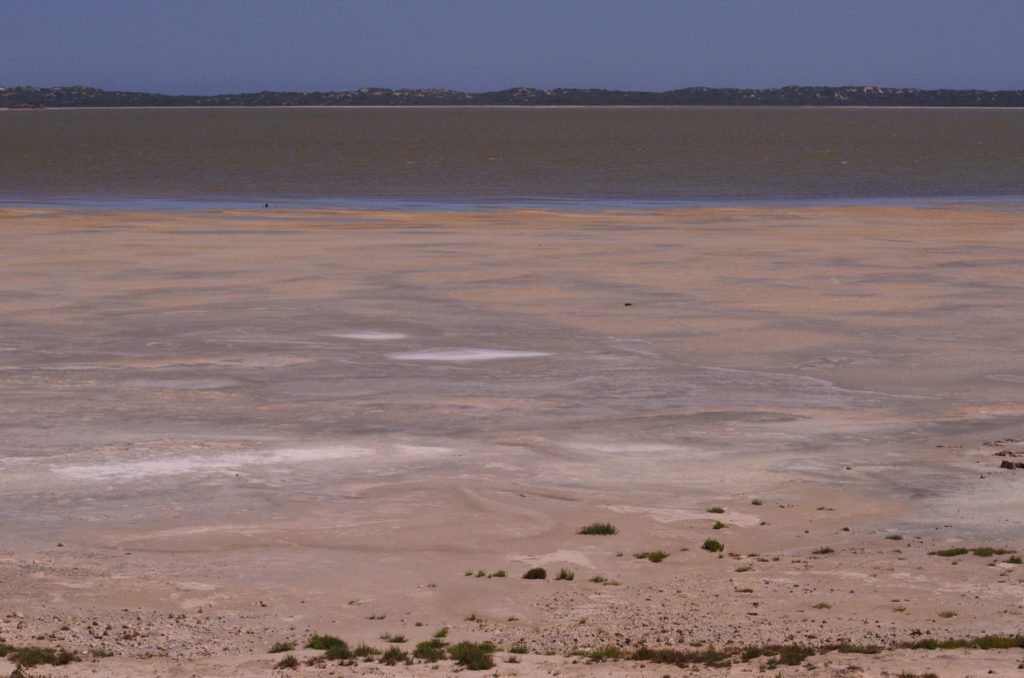
Wetlands in Coorong National Park
Never ending strips of shallow salty lagoons greeted me almost an hour after I had left Adelaide. It was just a sheet of white spread out on either side. I was at Coorong and it is a personal favourite. An avid birder like me could not resist when the largest pelican species in the world, the Australian pelican decided to show itself in these wetlands.
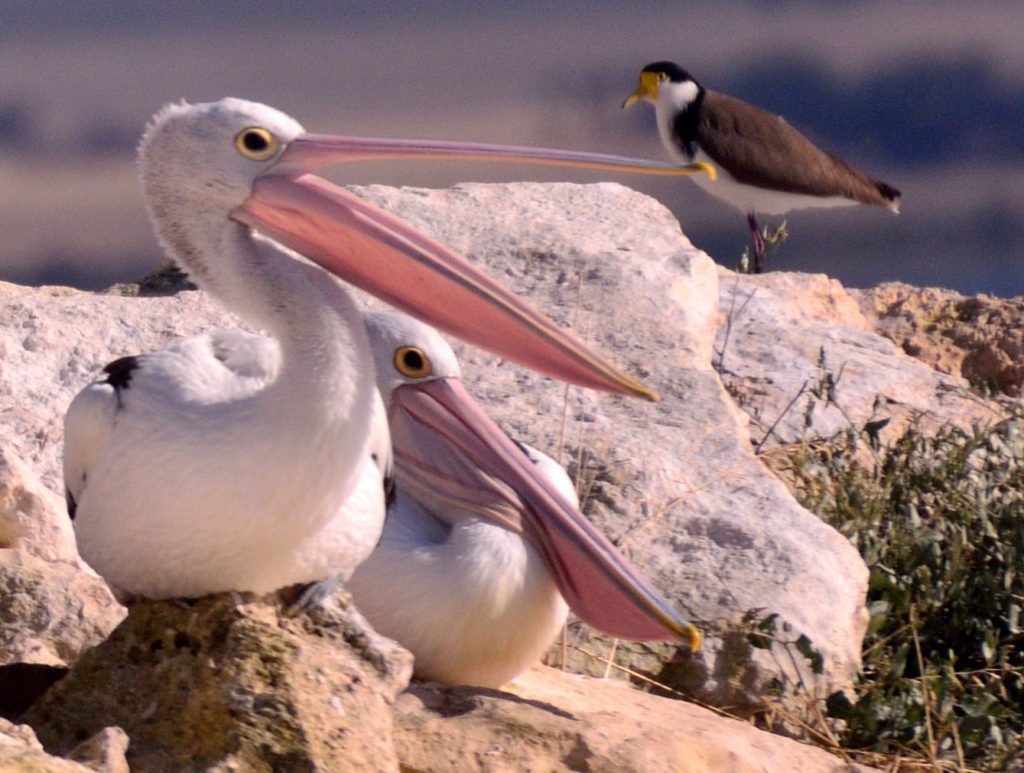
The largest pelican species is the Australian pelican
The Coorong National Park is believed to host around 90 species of birds and although I could not spend too much time here, I would probably come back to see the rest of the birds. You need a permit to visit the park and information is available at the state tourism web site or at tourism offices.
Robe
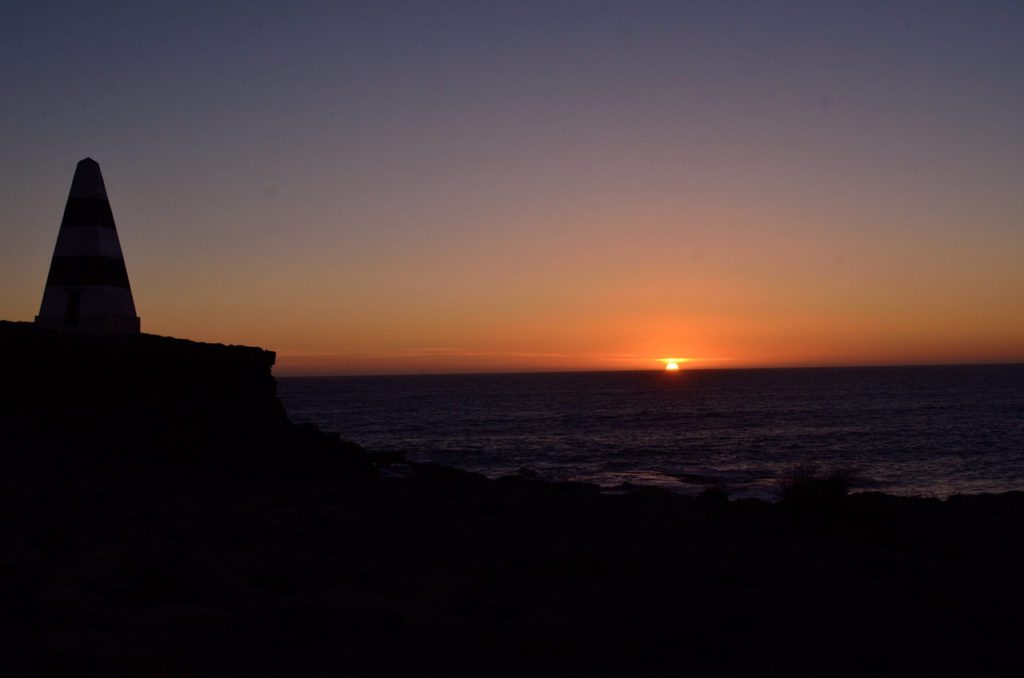
The sunset in Robe
I reached Robe, a little seashore town just in time to see the sunset. If you are on a road trip like me, this is where I would spend the night. Walk or cycle up the road beyond the main town towards the cliffs to see the coastline drenched in the evening rays of the sun. The only reminder of Robe’s tryst with fame as a thriving 19th century port is the Cape Dombey Obelisk, perched silently atop a craggy outcrop overlooking the sea. Standing at 40 feet high, it used to help navigate ships lost in the sea.
There is so much to do in Robe – cycling, fishing, birding, surfing, water sports and excursions into national parks near the town. However I spent the morning, lazing around the beach. Robe likes to boast about its quaint history but what I did feel interesting is a small memorial dedicated to 17000 Chinese who came here during the Gold Rush in 19th century. They apparently stayed in Robe and walked all the way 400 kms everyday to the Victorian mines just to avoid the tax levied by the state.
Naracoorte Caves
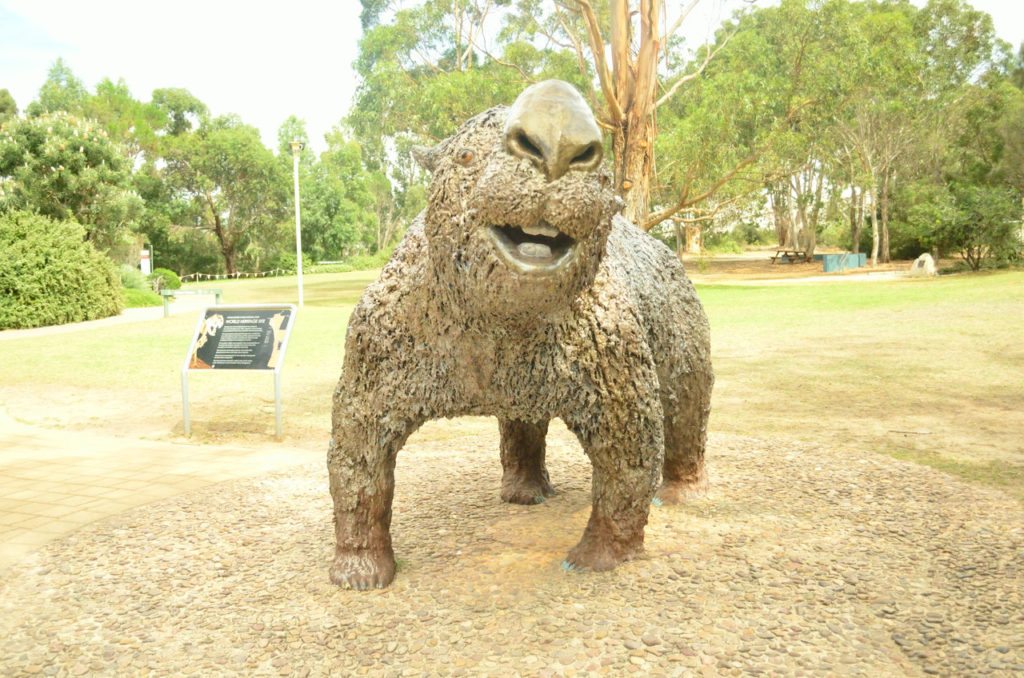
At the entrance at Naracoorte
Leaving Robe, I drove along a little off the coastline towards Naracoorte to see the only UNESCO World Heritage Site in South Australia where giant marsupials greeted me. A visit to the Naracoorte Caves takes you into a world of fossils and bones, into an Australia where massive marsupials lived in the region, 200,000 years ago. Do not miss the Wonambi Fossil Centre which brings alive the extinct wildlife of Australia. I saw 20 life size species of kangaroos from the era, however only four survive today.
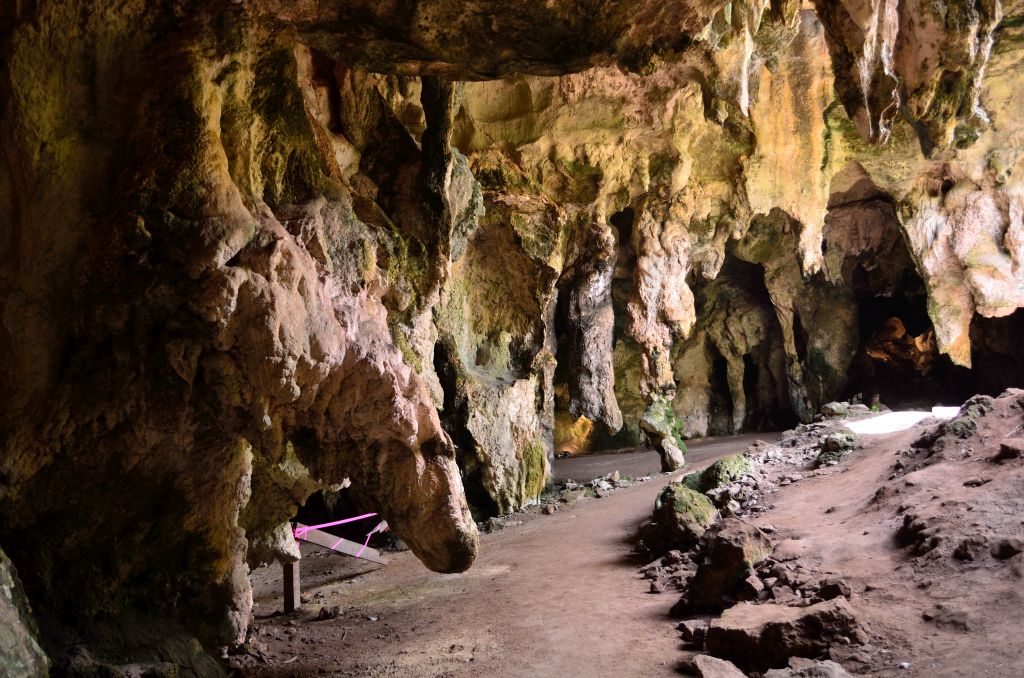
Inside the wet cave at Naracoorte Caves
When I walked in, I saw a group of tourists sitting in the Bat Observation Centre where they got a virtual peek inside the Bat Cave, which is now the home of Southern Bent winged species of bats.
However the other caves with the fossils – Alexandra Cave, the Victoria Cave and the Blanche Cave need a guided tour . I also visited the Wet Cave, dark and mysterious with stalactites deposits and this can be toured on your own.
Coonawarra Wine Region

The vineyards at Coonawarra
Driving towards Penola from Naracoorte Caves, I was suddenly surrounded by a fabric of green on either side of the road with sign boards everywhere. Spread among 20 kms of lush greenery are more than 25 cellar doors beckoning you to taste their wine. Welcome to Coonawarra, where the first vintage was produced in the 19th century .
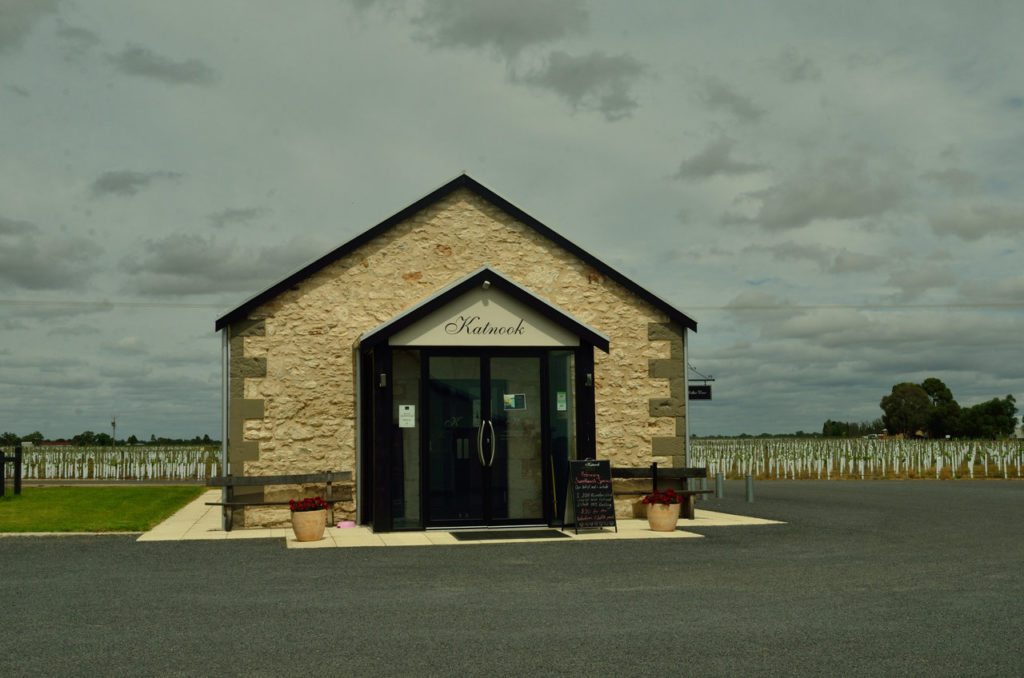
The cellar in Coonawarra
There is Wynns Coonawarra Estate who bought the first winery here and there is the famous Penfolds Winery. At Rymill Coonawarra where two bronze stallions greet me. Coonawarra is known for its Cabernet Sauvignon and its Shiraz and the rich wines owe it to the terra rosa soil, a blend of limestone and clay naturally mixed on the earth.
Mount Gambier
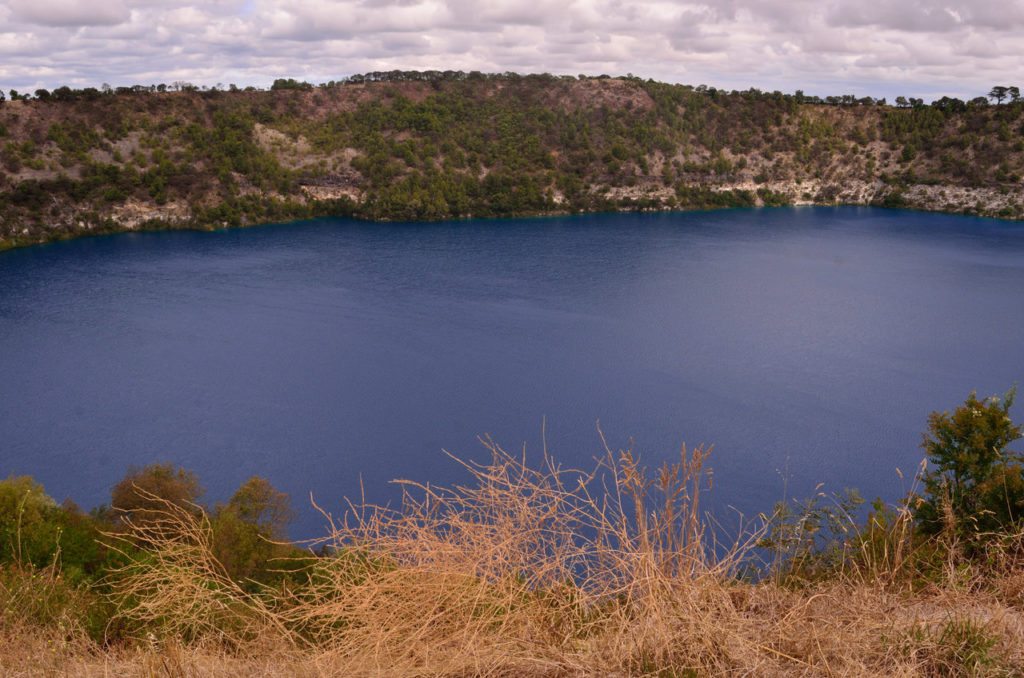
The Blue Lake in Mount Gambier- a crater lake
My last port of halt in South Australia before crossing into Victoria was Mount Gambier, a town located on the slopes of an extinct volcano. Crater lakes are what lures the tourists here and I headed to one of them – Blue Lake. It looked like a painting – a huge trough filled with still water glimmering in jet blue. Well, you can see it in cobalt blue only if you travel between December and March, else it apparently turns grey. No one really knows why it changes colour, although it is believed to be due to changes in temperature.
The Valley Lake pales in comparison though, many shades lighter in colour. I was fascinated by the names of the other two crater lakes- Mutton and Brown only to be told that they have dried up. There are a few caves in and around the town for adventure enthusiasts as well.
A verison of this post was published in HT Mint

Amazing!!!
http://www.myunfinishelife.com
Looks like a beautiful place and a great trip!
Beautiful. You always bring out a very personal dimension to your beautifully captured journeys.
Thanks so much
Incredible places! I want to visit one day!